Research Article - (2023) Volume 11, Issue 2
Development of Methods about Safe Application of Viral Strains with DNA-Genome as a Material for Design of New Molecular Vaccines against SARS-CoV-2/COVID-19
Iskra Sainova1*,
Vera Kolyovska1,
Tzvetanka Markova2,
Dimitrina Dimitrova-Dikanarova3,
Desislava Drenska4 and
Dimitar Maslarov4
1Department of Experimental Morphology, Pathology and Anthropolog, Bulgarian Academy of Sciences, Sofia, Bulgaria
2Department of Pharmacology and Toxicology, Medical University of Sofia, Sofia, Bulgaria
3Department of Biology, Medical University of Sofia, Sofia, Bulgaria
Department of Neurology, University of St. John Krastitel, Sofia, Bulgaria
*Correspondence:
Iskra Sainova, Department of Experimental Morphology, Pathology and Anthropolog, Bulgarian Academy of Sciences, Sofia,
Bulgaria,
Email:
Received: 30-Dec-2022, Manuscript No. IPAAD-22-15378;
Editor assigned: 02-Jan-2023, Pre QC No. IPAAD-22-15378 (PQ);
Reviewed: 16-Jan-2023, QC No. IPAAD-22-15378;
Revised: 09-Mar-2023, Manuscript No. IPAAD-22-15378 (R);
Published:
16-Mar-2023, DOI: 10.36648/2321-547X.23.11.012
Abstract
Taking in consideration the risk of thrombs by SARS-CoV-2 Spike (S) protein and of amyloid brain
plaques by its Nucleocapsid (N) protein, design of molecular (DNA, RNA and/or protein) vaccines
against viral Envelope (E) protein or viral Membrane (M) protein, and boosting by siRNAs against
virus genes, coding proteins S and N. Laboratory-incubated mammalian cells were transfected by
recombinant gene construct. This vector and separate sub-populations of transfected cells,
contained additional gene copy, demonstrated safety and capability for generation of adequate
immune response in vitro and in vivo. Other mammalian in vitro-cellular cultures were inoculated
with low infectious titers (high viral suspensions dilutions) of vaccine avipoxviral strains (Poxviridae
family), freezed in the presence of cryo-protector Dimethylsulfoxide (DMSO), thawed and reincubated.
As a source of extra-cellular virus served the cultural fluids, and of intra-cellular-scraped
cellular monolayers. The titers of the intra-cellular forms were significantly higher that these of the
extra-cellular. Transfer of nucleotide (DNA and/or RNA) fragments from virus to cellular genome,
and in opposite direction due to activated fusion on the influence of DMSO plus drastic
temperature changes were suggested. A possibility about application of viruses with DNA and/or
RNA-genome for production of molecular vaccines and of appropriate siRNAs was proposed. In
vitro-incubated cultures of non-malignant mouse embryonic cells; of containing endogenous
retrovirus mouse malignant myeloma cells, and of mixed cultures of both were lysed and subjected on
ELISA for determination the antibodies presence and titers. A possibility for production of
membrane receptor glycoproteins and antibodies/immunoglobulin’s by non-myeloid and nonlymphoid
cells in appropriate conditions was suggested. Because the produced antibodies are out
of the germinative centers in the lymphoid tissues and organs, for escape of chronic inflammation, often leading to malignant transformation or degenerative changes, they should be controlled by
small ions or molecules.
Keywords
Viral strains; Molecular vaccines; COVID-19; DNA genome; ELISA
Introduction
The potential of viruses as appropriate vectors for
development of various therapeutic strategies, as well as for
design of molecular (with DNA, RNA and/or protein nature)
vaccines by substitution of appropriate cell nucleotide
sequences has been proved [1-3]. These types of vaccines
have shown many advantages compared with the attenuated,
died and subunit vaccines. Both RNA and DNA viruses could
be applied for this goal, but also bacteria plasmids and yeasts’
genomes [4,5]. In all cases described, appropriate promoter
gene should be inserted about the expression of the
respective inserted gene of interest. The used initial vector
constructs should contain specific restriction sites, and the
respective DNA-fragment(s) of interest should be obtained by
treatment with respective restriction enzymes (most often
bacterial ends-nucleases). Other important components are
the Inverted Terminal Repeats (ITRs). Possible modifications
have been proved to be increased expression level of the
foreign antigen by a change in the promoter or in the
insertion site of the applied viral vector. These features are
taken in consideration in design of different types of vaccines
against Corona viruses (Figure 1) [6-9].
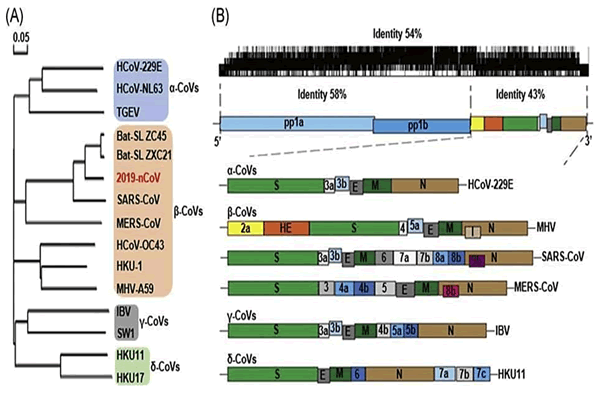
Figure 1: Genomic structure and phylogenetic tree of
Coronaviruses: Phylogenetic tree of representative
Coronaviruses, with SARS-CoV-2/COVID-19. A) Genome
structure of four Coronavirus genera: Two long polypeptides
16 non-structural proteins have proceeded from Pp1a and
pp1b represent. B) S, E, M and N are represented of the four
structural proteins: Spike, envelope, membrane and
nucleocapsid. HE: Hemagglutinin-Esterase. Viral names (HKU):
Coronavirus (identified by Hong Kong University); HCoVHuman
Coronavirus; IBV: Infectious Bronchitis Virus; MHV:
Murine Hepatitis Virus; TGEV: Transmissible Gastroenteritis
Virus.
The role of the cellular Angiotensin-Converting Enzyme 2 (ACE2)
as the main target of SARS-CoV-2/COVID-19, as well as of the
other members belonging to Coronaviridae family (as the
agents, causing SARS and MERS) has been proved [10]. Each
monomer of the trimeric Spike (S) glycoprotein consists of two
subunits, S1 and S2, which allows binding to the ACE2 receptor
and subsequent fusion of the viral and host cellular membranes.
As an integral part in the activation and induction of a
conformation changes in the S-protein–ACE2 receptor complex,
which allows the further process of fusion between the virus
particle and the host cell, has been characterized the enzyme
serine protease (TMPRSS2) [11]. By penetration in the cell through the cellular receptor ACE2, the negative influence of
these viruses, but even of their components, on the enzyme
functions should also be taken in consideration as
underlining in many symptoms of the infections, caused by
them, including injured functions of many important
anatomic organs [12,13]. Additionally, the role of Renin
Angiotensin Aldosterone System (RAAS) has been proved as
key in the regulation of the systemic blood pressure and
renal function [14]. Therefore, methods and strategies for
improving and regulation of their functions should also be
developed [15]. Some differences in the arrangement of the
Envelope (E), Membrane (M) and Nucleoprotein (N) among
SARS-CoV-2, SARS-CoV and MERS-CoV have been shown
(Figure 2) [16,17]. Thus, together with development of
methods for activation of adequate antiviral immunity,
strategies for suppression of key viral genes (as genes,
responsible about the virus penetration in the cell, for the
virus replication, but also the two processes) in the virus RNAgenome
should also be developed (Figure 3) [18].
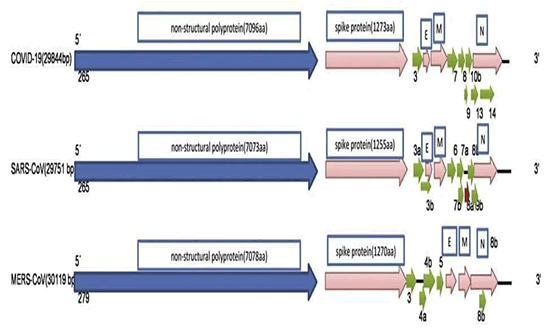
Figure 2: Differences in the arrangement of the Envelope (E),
Membrane (M) and Nucleoprotein (N) among SARS-CoV-2,
SARS-CoV and MERS-CoV.
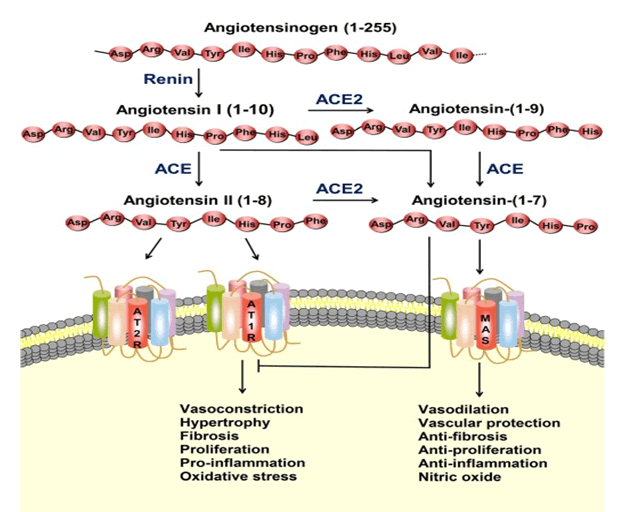
Figure 3: General illustration of the Renin-Angiotensin System
(RAS) and ACE2/angiotensin-(1– 7)/MAS axis.
Renin is a protease, which converts angiotensinogen to Ang-I,
which is subsequently converted to Ang-II by Angiotensin-
Converting Enzyme (ACE). Ang-II is able to bind to the
Angiotensin Type 1 Receptor (AT1R) to perform functions as
vasoconstriction, hypertrophy, fibrosis, proliferation,
inflammation and oxidative stress. ACE2 can covert Ang-I and
Ang-II to angiotensin-(1–7). Angiotensin-(1–7) binds to the MAS receptor to exert actions of vasodilation, vascular
protection, anti-fibrosis, anti-proliferation, and antiinflammation.
Ang-II can also bind to the Angiotensin Type 2
Receptor (AT2R) to counteract the aforementioned effects
mediated by AT1R (Figures 3-5) [19].
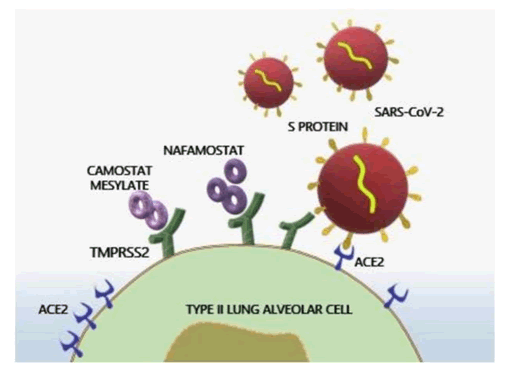
Figure 4: SARS-CoV-2 attachment and fusion machinery on
human host cells.
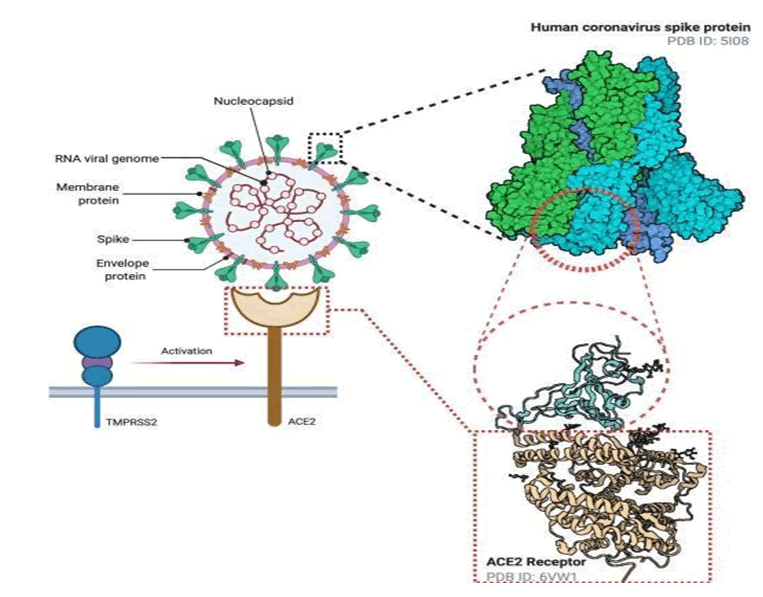
Figure 5: General illustration of the mechanism, by which
SARS-CoV-2 penetrates in the cell by its Spike (S) protein
through ACE2 cellular membrane receptor.
Vectors, based on adenovirus genome (Adenoviridae family),
usually contain non-coding DNA, which is necessary to be
ensured genome stability [20]. The early regions have been
noted as E1–E4 along with the full-length major late
transcript, followed by the late L1–L5 transcripts, produced
through alternative splicing. Transcripts, encoding pIX, IVa2,
and VA RNA I and II, are also shown. ITRs serve as origins of
replication, and Ψ is the packaging sequence. When the early
region E1 in the Ad vector is deleted, the inserted gene of
interest normally replaces deletion E1 region and its
expression is driven by a heterologous promoter. Most of
these vectors have also been characterized with removed/
deleted E3 region, but this region is not essential for the viral
replication and allows insertion of a ~8 kb foreign expression
cassette (Figure 6).
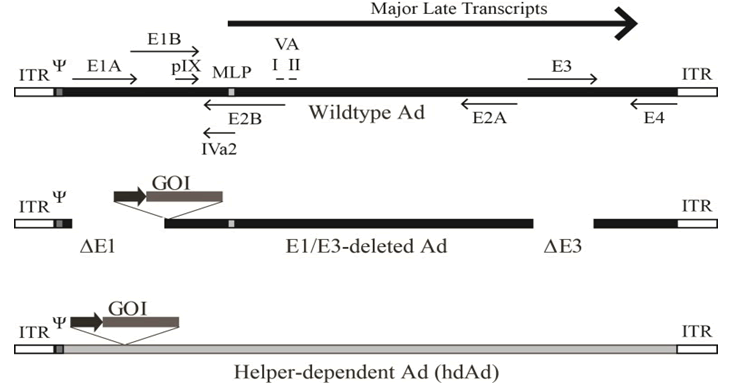
Figure 6: General presentation of the adenovirus genome
and various adenoviral vectors (top panel).
The early regions are noted as E1–E4 along with the full-length
major late transcript from which the late L1–L5 transcripts are
produced through alternative splicing. Transcripts, encoding
pIX, IVa2 and VA RNA I and II, are also shown. ITR represents
the inverted terminal repeats that serve as origins of
replication and Ψ is the packaging sequence. A typical early
region (E1) deleted Ad vector is shown. The gene of interest
(GOI) normally replaces the E1 deletion and its expression is
driven by a heterologous promoter (Middle panel-dark arrow).
Most of these vectors also have the E3 region removed, but it
is not essential for viral replication and allows for insertion of
a~8 kb foreign expression cassette (bottom panel). All the
DNA encoding viral proteins are removed, only the ITRs and
packaging sequence are required. These vectors usually have
non-coding stuffer DNA (grey) to ensure the genome is stable.
MLP-Major Late Promoter.
Most of the features of the Adeno Associated Virus (AAV)
(Parvoviridae family) have identified it as highly desirable as a
therapeutic gene carrier, mainly because of the nonpathogenic
nature of its wild-type and its ability to infect nondividing,
terminally differentiated cells, as well as because of
its sustained transgene expression in vivo. However, even
when all the DNA-encoding viral proteins are removed, only
the ITRs and packaging sequence are required (Figure 7).
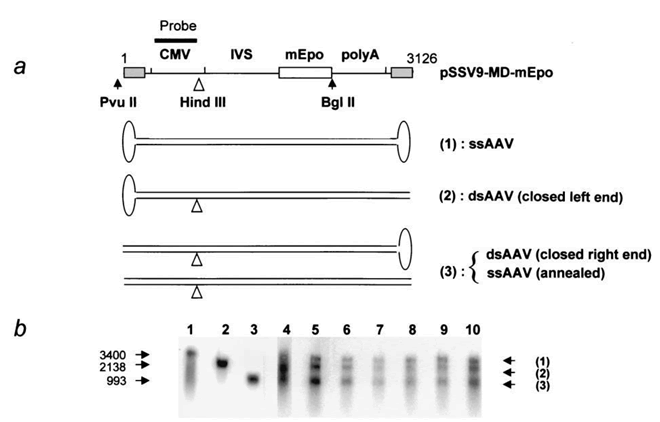
Figure 7: Southern blot analysis of the vector DNA after
alkaline gel electrophoresis.
Positions of restriction sites and probe (CMV promoter) in
pSSV9-MDmEpo. The different species expected to be
detected in the analysis are represented below. Three different fragments are expected upon HindIII digestion of
these forms: (1) Undigested ssDNA, (2) Fragment from closedleft-
end ds species (ds forms resulting from the synthesis of
positive strand), and (3) Fragment either from re-annealed ds
species or from closed-right-end species (ds forms resulting
from synthesis of negative strand). IVS, second intron from
the human B-globin gene (A); Southern blot following alkaline
gel electrophoresis of HindIII-digested total muscle DNA (4
mg) from animals sacrificed on day 1 (lanes 5 and 6
correspond to two different DNA samples from the same
injected muscle split prior to the extraction process, and lane
7 corresponds to a second animal), day 2 (one animal, lane 8)
and day 3 (two animals, lanes 9 and 10). Lane 4 contains DNA
from 293 cells coinfected with AAV-MD-mEpo and a helper
adenovirus as a control for second strand synthesis. Lanes 1 to
3: Purified DNA from rAAV green fluorescent protein neo
particles (lane 1), PvuII/BglII fragment from pSSV9-MD-mEpo
(lane 2), and PvuII/HindIII fragment of pSSV9-MD-mEpo (lane
3) (B). Sizes in bases are indicated on the left. DNA-genome of
the poxviruses (Poxviridae family) has been characterized
among the most appropriate and applicable materials for
production of gene-engineering vaccines and vectors for
transfer of nucleotide fragments. Its expression could be
provided by integration of appropriate promoter gene, which
should be located out of the tk locus in the virus DNA-genome
because of the proved necessity of intact tk gene. Most often
production of recombinant vectors and vaccines, based on the
poxviral DNA-genome, become by homologous recombination
or by a direct molecular cloning. Different methods and
techniques for maximally safe application of the received
recombinant constructs on both cellular and organism levels
should be developed, which depends on the type of the
respective cells and organisms, as well as of the respective
biological species. In this relation, some of the necessary
characteristics are: Application of attenuated vaccine viral
strains; appropriate initial infection titer (concentration of
infections particles in minimal volume, respectively), as well
as heterologous strains of the respective cells, tissues, organs
or organisms for instance, application of homologous avian
viral and bacterial strains in work with mammals and/or cells
with mammalian origin. In this direction, the potential of
avian pox viruses as appropriate vectors for development of
various therapeutic strategies with mammals and mammalian
cells has been proved in many literature findings.
So, the main goal of the presented study is directed to
development of novel safe methods about application of
viruses as vectors for design of new molecular anti-SARSCoV-
2/COVID-19 vaccines against other virus proteins
(different of viral proteins S and N), with simultaneous
boosting by appropriate siRNAs against virus genes, coding
viral S and N proteins, and availability of adequate immune
reaction.
Materials and Methods
Insertion of Nucleotide Fragments by Previously
Designed Recombinant DNA Viral Vectors
The obligatory components of the developed recombinant
DNA-genome from Adeno-Associated Virus (AAV)(Parvoviridae
family), besides the respective gene of interest, were also
promoter for gene, coding eukaryotic elongation factor 1-
alpha (EF1-α) and previously isolated from bacterial DNAplasmid
marker gene, providing resistance to Neomycin
antibiotic. Genomic assay was made by standard Polymerase
Chain Reaction (PCR), and expression of the respective
inserted gene by Reverse Transcriptase PCR (PR-PCR),
respectively, both by application and of specific primers and
followed by electrophoresis in 1% agarose gel. A subpopulation
of in vitro incubated mouse Embryonic Stem Cells
(mESCs) was transfected with the so received recombinant
DNA-constructs. The selection of mESCs, containing
additionally-inserted copy of the respective gene of interest
was made on the basis of the presence of the near localized
gene, determining the resistance of neomycin, by incubation
in the presence of its synthetic analog G-418. The cells were
seeded at initial dilution 1 × 106 cells/ml cultural fluid,
incubated at 37°C in thermostat with 5% CO2 and 95% air
humidity, and observed at 24 hours intervals, by inverted light
microscope Televal, supplied by mega-pixel CCD-camera as
fixed slides, prepared by treatment with ethanol after
previous washing by Phosphate Buffered Saline (PBS sigma)
and subsequent staining by Giemsa dye (Sigma).
Insertion of Nucleotide Fragments by Activation of
Fusion Process
Low initial infectious virus titers (high initial dilutions,
respectively) of the initial suspensions of heterologous for
mammals and mammalian cells probably attenuated by many
passages vaccine avipoxviras strains (Poxviridae family) were
applied. The so inoculated semi-confluent mono-layers of
embryonic mammalian cells were then freezed at −80°C in the
presence of cryo-protector Dimethylsulfoxide (DMSO sigma),
subsequently thawed and re-incubated in fresh cultural fluid.
After washing with PBS (sigma), the monolayers of the
inoculated mammalian cells were scraped-off and
subsequently used as a source of intra-cellular virus forms of
the vaccine viral strains. Cultural fluids of the incubated and
inoculated mammalian cells served as a source of the extracellular
forms of the same vaccine strains. De novo-seeded
cultures of the same mammalian cells were then inoculated
with the so prepared intra and extra-cellular forms of each
one of the two vaccine avipoxviras strains. All cell cultures
were seeded at initial dilution 1 × 106 cells/ml cultural fluid,
incubated at 37°C in thermostat with 5% CO2 and 95% air
humidity, and observed at 24 hours intervals, by inverted light
microscope Televal, supplied by mega-pixel CCD-camera, as
native preparations.
Experimental In vivo Models
Because of the proved reliability of the blood picture for the
influence of various internal and external factors on the health
parameters and immunological status in vivo, smears from
peripheral blood of the tail vein of experimental mice from
Balb/c line were prepared. The animals were separated into
three groups: Non-inoculated controls; inoculated with
recombinant DNA-construct/vector, containing additionallyinserted
gene copy, and inoculated with suspension of
transfected by the same recombinant vector mESCs,
containing additionally-inserted copy of the same gene. Fixed
light-microscopy slides, stained by Hematoxillin and Eosin
(H/E) technique, were prepared.
Western-Blot (Immunoblot) Assay
Aliquots from the lisates of proteins, produced by the “donor”
recombinant DNA-viral vector, from the “recipient”
recombinant DNA-construct, but also from lysate of
transfected cultivated mESCs, containing additionally-inserted
copy of the same gene of interest (after previous
trypsinization, resuspendation and centrifugation) were
harvested, washed, in PBS and treated with lysis buffer on ice.
The extracts with protein content adjusted to 10 μg/10 μl
were subjected on Polyacrylamide Gel electrophoresis (SDSPAGE).
After washing the gel with distilled water, it was
transferred to a methanol-pretreated P-0.45 polyvinylidene
difluoride membrane (GE healthcare life science, Freiburg,
Germany) by application of transfer buffer (100 ml 10 × TBS:
24.2 g Tris-HCL; 5.6 g Tris base; 80 g NaCl, pH 7.6). The
membrane was then treated with blocking buffer (5% bovine
serum albumin in 0.1% Tween/1 × TBS) on shaking machine
for 1 hours-1.5 hours, and then with washing buffer (0.1%
Tween/1 × TBS) for 10 minutes. After overnight incubation of
the membrane with primary antibody at 40°C, it was then
washed in washing buffer on shaking machine 3 times for 45
minutes and consequently in blocking buffer. The second
antibody, diluted (1:2000) in 2% dry nonfat milk, was applied
for 3 hours-4 hours at room temperature on shaking machine.
The data were processed by application of Image software.
ELISA Protocol
Mouse embryonic fibroblasts from line 3T3 were incubated
Dulbecco’s modified Minimal Essential Medium (DMEM)(Sigma-
Aldrich), supplemented with 10% Fetal Calf Serum (FCS) (Sigma-
Aldrich), 100 IU/ml penicillin (Sigma-Aldrich) and 100 μg/ml
streptomycin (Sigma-Aldrich). Also, suspension cultures of
mouse malignant myeloma cells, containing endogenous
retrovirus (Retroviridae family, possessing RNA-genome), were
incubated in analogically supplemented medium RPMI
1640. Separate sub-population of non-malignant fibroblasts was pre-incubated in cultural fluid from previously incubated in it
containing endogenous retrovirus malignant myeloma cells,
after previous centrifugation and filtration. According to the
literature data, by retroviral vector has been inserted bacterial
gene lacZ, coding enzyme beta-galactosidase, which has been
subsequently introduced in Dendritic Cells (DCs). The prepared
cultures were put at 37°C in thermostat with 5% CO2 and 95%
air humidity, at initial dilution 1 × 106 cells/ml cultural
fluids, and subsequently lysed by treatment of
previously prepared cell suspensions with 10% Tri-
Chloroacetic Acid (Cl3CCOOH) and 0.48 M solution of K3PO4.
For determination of the titers of anti ganglioside antibodies,
1000 ng of the respective ganglioside (Sigma) in 100 ml
methanol were pipetted into microtiter plate wells (96-well
plaques), containing the tested biological material.
Subsequently, the wells were air-dried and blocked with BSAPBS
(Sigma) (1% bovine serum albumin in PBS) for 1 hour.
After six-fold washing with PBS, 100 μl of each one of the
prepared lysates from the cellular cultures, described above,
diluted 1: 20 to 1:5000 in PBS were added to each well and
incubated overnight. Then the plaques were washed six-fold
with PBS. Binding was detected by following 2 hours
incubation period with BSAPBS (Sigma) diluted (1/3200)
peroxidase-conjugated goat antihuman IgG antibodies (Bul bio
ltd., NCIPD, Sofia). All the incubations were performed at 40°C.
The plates were then washed six times with PBS. Color
development was achieved in a substrate solution, previously
prepared from 15 mM O-Phenylenediamine and 0.015%
H2O2 in 0.1 M sodium acetate buffer (0.2 M
CH3COONa/0.2 M CH3COOH; pH 5.0) at 20°C. The reaction
was stopped after 30 minutes with 50 ml of 1N H2SO4, and the
Optical Density (OD) was assessed spectrometric ally at 490
nm on ELISA-reader (TECAN TM, Sunrise, and Austria).
Non-specific antibody bindings (OD value in a well not
containing the specific molecule in the respective probe)
were subtracted for each measurement. The data were
considered strongly positive, when the mean OD exceeded
2 ± SD (Standard Deviation), compared with the controls.
The standard error of mean varied between ± 0.1 and ±
0.2. For the best reliability the procedure was performed
three times.
Results
Presence and expression of the inserted copy of the
respective gene of interest in separate sub-populations of
mammalian cells, transfected by based on AAV DNA-genome
recombinant DNA-constructs, containing it, was proved by
standard PCR and RT-PCR, respectively, as well as by the
results from the performed western-blot (immunoblot) assay
(Figures 8 and 9).
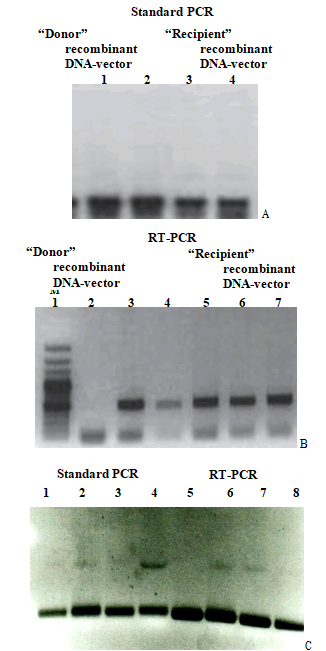
Figure 8: Agarose gel electrophoresis for prove of the
presence of additionally-inserted gene copy in the applied for
transfection based on AAV recombinant DNA-construct and
for prove of its expression.
By standard PCR (A) and RT-PCR (B), respectively, and in the
“donor” recombinant viral DNA-vector (A–lanes 1 and 2; Blanes
3 and 5) and “recipient” recombinant DNA-construct
(A–lanes 3 and 4; B–lanes 6 and 7); lane 1-marker (M); as well
as for prove of presence of additionally-inserted gene copy in
transfected mESCs (C), by standard PCR (C-lanes 2 and 4) and
RT-PCR (C-lanes 6 and 7), by application of specific primers,
complementary to the used for transfection recombinant
DNA-construct and thus, to the inserted in them additional
gene copy e of additionally-inserted gene copy in transfected
mESCs, by standard PCR (C-lanes 1 and 4) and RT-PCR (C-lanes
6 and 7), by application of specific primers, complementary to
the used for transfection recombinant DNA-construct and
thus, to the inserted in them additional gene copy.
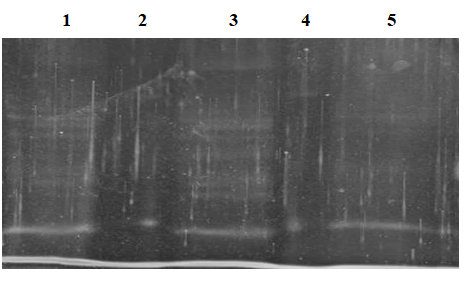
Figure 9: Western-blot assay by electrophoresis on
polyacrylamide gel for prove the protein product of the tested
gene of interest: Lane 1–from transfected MESCS, containing
additionally-inserted copy of the gene of interest; lane 3–from
the “donor” recombinant viral DNA-vector; lane 5–from the
“recipient” recombinant DNA-construct.
Although significant differences between the blood pictures
from the experimental mice of the three groups were not
observed increased number of cells, particularly of different
types of white blood cells in the blood smears of the rodents,
inoculated with recombinant DNA-construct and of the
animals, inoculated with suspension of transfected with the
same vector cells, containing additionally-inserted copy of the
gene, compared with the non-inoculated controls. These data
suggested the safety of the applied recombinant viral vector
and of the transfected with it cells, containing additionallyinserted
gene, but on the other hand, generation of adequate
immune response of the organism, depending of
the respective factor influence (Figure 10).
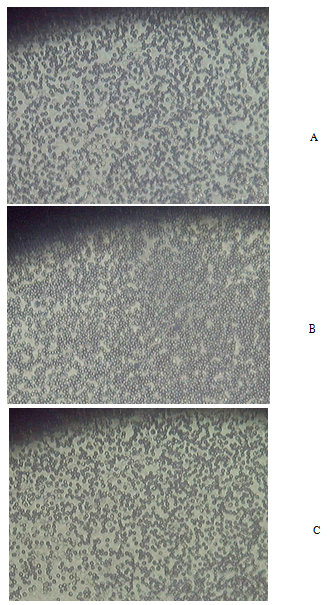
Figure 10: Peripheral blood smears from Balb/c experimental
adult mice: A) Non-inoculated control; B) Inoculated
with recombinant DNA vector, containing inserted copy of
gene of interest; C) Inoculated with suspension of
transfected mESCs, containing additional copy of gene of
interest (fixed light microscopy preparations, stained by
H/E, magnification: 100X).
In the blood picture from mouse, inoculated with
recombinant DNA vector, containing inserted copy of the
gene of interest, cellular differentiation of white blood cell
directions from lymphocyte direction monocyte/macrophage
lineages was observed. The blood picture from mouse,
inoculated with suspension of transfected mESCs, containing
additionally-inserted copy of the same gene was neares to this
from the non-inoculated control, which was a prove
about normal differentiation to the different blood cell
lineages in both presence and absence of these transfected
cells.
The observed in all cases higher titers of the intra-cellular
forms of both vaccine viral strains compared to their
extra-cellular forms (Figures 11 and 12) could suggest a presence of the respective strain in various sub-forms in the
cell, including as a pro-virus.
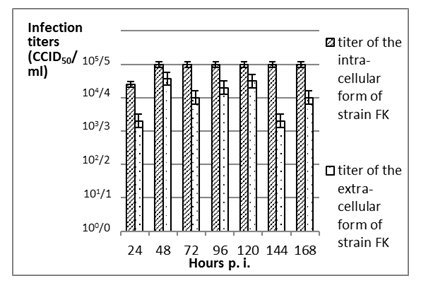
Figure 11: Infectious titers of intra and extra-cellular forms of
fowl pox vaccine viral strain FK on laboratory incubated
mammalian cells, P<0.01.
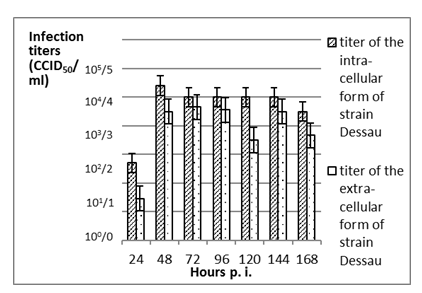
Figure 12: Infectious titers of intra and extra-cellular forms of
pigeon pox vaccine viral strain Dessau on laboratory
incubated mammalian cells, P<0.01.
The question, which arose, was: What makes the cells as
acceptable about external inviders as viruses, malignant cells/
antigens, etc.? In most cases, higher titers of the antiganglioside
antibodies in the lysates from the cultures of
malignant myeloma cells and from the mixed cultures of
fibroblasts, pre-incubated in cultural fluid from the malignant
cells, compared to their titers in the lysate from the nonmalignant
3T3 fibroblasts, were assessed (Figure 13).
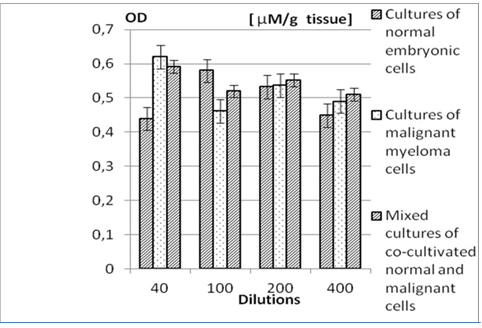
Figure 13: Average titers of anti-ganglioside antibodies in
extracts from in vitro incubated cultures of non-malignant 3T3
mouse embryonic fibroblasts, of containing endogenous
retrovirus mouse malignant myeloma cells, as well as from
mixed cultures of both cellular types. OD–Optical Density,
SD between ± 0.1 and ± 0.2, P<0.05.
Discussion
According to the performed standard PCR and RT-PCT with
subsequent electrophoresis, but also to the performed
Western-blot (Immunoblot) assay with subsequent SDSPAGE,
in both “donor” and “recipient”, as well as in the
transfected cells was detected the presence of additionallyinserted
copy of the respective gene of interest and
its expression, respectively. This study was performed for
investigation on the possibility about insertion of foreign
genes in the DNA-genome of the adeno associated
viruses and thus, the possibility about application of these
viruses for various gene-engineering manipulations in the
concrete case, about production of molecular vaccines
and siRNAs. The data obtained additionally confirm the
usability of the applied methods. The established higher
titers of the intra-cellular forms of both vaccine
avipoxviral strains, compared with these of their extracellular
forms from the 24th to the 168th hour P.I. could be
explained with eventual existence of the intra-cellular forms
in several different variations, including as pro-viruses.
Additionally, the proved in the scientific literature changed
properties of many membrane molecules on the influence
of DMSO and of the drastic temperature changes, but also
with the influence of many inter-molecular
interactions, leading to activated fussion processes, was
suggested. Thus, a possibility for transfer of nucleotide (DNA
and/or RNA) fragments from virus to cellular genome, as well
as in the opposite direction (from cellular to viral genome) in
these conditions could be proposed. In this way, a possibility
about development of methods for production of molecular
vaccines, as well as of appropriate siRNAs on the basis of
poxviruses by appropriate application and processing could be
suggested. Several main mechanisms of malignant cellular
transformation by endogenous retroviruses have been
proved: By in vivo infection of newborn mice, by xenograft
inbred rodents, as well as by inoculation of in vitro incubated
cells. The results obtained confirmed a possibility for production of appropriate molecular vaccines and RNAs by
exchanges of nucleotide sequences between viral and cellular
genomes. In this way, a possibility about application of
retroviruses for production of molecular vaccines and siRNAs
was confirmed. On the other hand, in all cases the current
results confirmed the literature findings about a possibility for
expression of immunoglobulin’s/antibodies and membrane
receptor glycoproteins by non-myeloid and non-lymphoid
cellular types in appropriate conditions, as for instance,
presence of malignant cells or malignant antigens, of viruses
or viral antigens, as well as appropriate cytokines,
immunomodulators, etc. In this way, the current data
suggested a possibility about development of novel
prophylactic, diagnostic and therapeutic strategies. However,
because the so produced antibodies are out of the
germinative centers of the specialized lymphoid tissues and
organs, the control of their functions by is of key importance,
for escape of chronic inflammatory process, which could lead
to malignant transformations or to degenerative changes. For
providing and support of this control have been found to be
responsible small ions and molecules as ganglioside, by direct
participation, but also by indirect influence on various intermolecular
interactions and cascade regulatory pathways.
Conclusion
In the current research paper was taken in consideration the
proved activated formation of thrombs on the influence of
Spike (S) protein of virus strain SARS-CoV-2, as well as of the
proved activated formations of observed in different
dementias protein plaques in the brain on the influence of
Nucleocapsid (N) protein of the same virus. In this relation,
possibilities about design of molecular (DNA, RNA and/or
protein) vaccines against other virus proteins, different of
proteins S and N, for escape of the risks, mentioned above,
were investigated, but also of specific siRNAs against the virus
genes, coding viral proteins S and N. In this connection,
possibilities for application of viruses, possessing DNA and
RNA-genomes as appropriate vectors about transfer of
nucleotide sequences in the cell, between to each other, as
well as from cellular genome to virus strains, were developed
and tested, by development and application of techniques
about activation the fusion process as influence of organic
detergent (DMSO in the concrete case) and of drastic
temperature changes. In all cases was shown a possibility
about application of viruses, possessing DNA and/or RNAgenome
for production of molecular vaccines, as well as of
appropriate RNAs. Additionally, in support with the literature
data, a possibility for production of membrane receptor
glycoproteins and of immunoglobulins/antibodies by nonmyeloid
and non-lymphoid cellular types in appropriate
conditions was suggested, which proposed a possibility about
development of novel diagnostic, prophylactic and
therapeutic approaches. Further studies are necessary to be
performed.
Conflict of Interests
The authors have not declared any conflict of interests.
Acknowledgements
Short-term postdoctoral “Ernst-Mach” fellowship/grant at the
Institute of Molecular Biotechnology (IMBA) to the Austrian
academy of sciences in Vienna, Austria, 2009.
References
- Palese P, Roizman B (1996) Genetic engineering of viruses and of virus vectors: A preface. Proc Natl Acad Sci USA. 93(21):11287.
[Crossref] [Google Scholar] [PubMed]
- Parks R, Krell P, Derbyshire J, Nagy E (1994) Studies of fowl pox virus recombination in the generation of recombinant vaccines. Virus Res. 32(3):283-297.
[Crossref] [Google Scholar] [PubMed]
- Sutter G, Moss B (1992) Non-replicating vaccinia vector efficiently expresses recombinant genes. Proc Natl Acad Sci USA. 89(22):10847-10851.
[Crossref] [Google Scholar] [PubMed]
- Brachmann C, Davies A, Cost GJ, Caputo E, Hieter P, et al. (1998) Designer deletion strains derived from Sacharomyces cerevisiae S288C: A useful set of strains and plasmids for PCR-mediated gene disruption and other applications. Yeast. 14(2):115-132.
[Crossref] [Google Scholar] [PubMed]
- Domi A, Moss B (2005) Engineering of a vaccinia virus bacterial artificial chromosome in Escherichia coli by bacteriophage λ-based recombination. Nat Methods. 2(2):95-97.
[Crossref] [Google Scholar] [PubMed]
- Chen Y, Liu Q, Guo D (2020) Emerging coronaviruses: Genome structure, replication, and pathogenesis. J Med Virol. 92(4):418-423.
[Crossref] [Google Scholar] [PubMed]
- Du L, He Y, Zhou Y, Liu S, Zheng BJ, et al. (2009) The spike protein of SARS-CoV: A target for vaccine and therapeutic development. Nature Rev Microbiol. 7(3):226-236.
[Crossref] [Google Scholar] [PubMed]
- Naqvi ABT, Fatima K, Mohammad T, Fatima U, Singh IK, et al. (2020) Insights into SARS-CoV-2 genome, structure, evolution, pathogenesis and therapies: Structural genomics approach. Biochim Biophys Acta Molecular Basis of Dis. 1866(10):165878.
[Crossref] [Google Scholar] [PubMed]
- Zhu X, Liu Q, Du L, Lu L, Jiang S (2013) Receptor-binding domain as a target for developing SARS vaccines. J Thorac Dis. 5(2):142-148.
[Crossref] [Google Scholar] [PubMed]
- Perrotta F, Matera MG, Cazzola M, Bianco A (2020) Severe respiratory SARS-CoV-2 infection: Does ACE2 receptor matter? Respi Med. 168:105996.
[Crossref] [Google Scholar] [PubMed]
- Wiese O, Zemlin AE, Pillay TS (2020) Molecules in pathogenesis: Angiotensin Converting Enzyme 2 (ACE2). J Clin Pathol. 74(5):285-290.
[Crossref] [Google Scholar] [PubMed]
- Ni W, Yang X, Yang D, Bao J, Li R, et al. (2020) Role of Angiotensin-Converting Enzyme 2 (ACE2) in COVID-19. Critical Care. 24(1):422.
[Crossref] [Google Scholar] [PubMed]
- Tikellis C, Thomas MC (2012) Angiotensin-Converting Enzyme 2 (ACE2) is a key modulator of the renin angiotensin system in health and disease. Internat J Peptides :256294-256298.
[Crossref] [Google Scholar] [PubMed]
- Clarke NE, Turner AJ (2012) Angiotensin-converting enzyme 2: The first decade. Int J Hypertens. 2012:307315.
[Crossref] [Google Scholar] [PubMed]
- Hamming I, Cooper ME, Haagmans BL, Hooper NM, Korstanje R, et al. (2007) The emerging role of ACE2 in physiology and disease. J Pathol. 212:1-11.
[Crossref] [Google Scholar] [PubMed]
- Manfredonia I, Incamato D (2020) Structure and regulation of coronavirus genomes: State of the art and novel insights from SARS-CoV-2 studies. Biochem Soc Transcations. 49(1):341-352.
[Crossref] [Google Scholar] [PubMed]
- Mousavisadeh L, Ghasemi S (2020) Genotype and phenotype of COVID-19: Their roles and pathogenesis. J Microbiol Immunol Infect. 54(2):159-163.
[Crossref] [Google Scholar] [PubMed]
- Davis NL, Brown KW, Johnson RE (1996) A viral vaccine vector that expresses foreign genes in lymph nodes and protects against mucosal challenge. J Virol. 70(6):3781–3787.
[Crossref] [Google Scholar] [PubMed]
- Davison AJ, Benko M, Harrach B (2003) Genetic content and evolution of adenoviruses. J General Virol. 84(11):2895-2908.
[Crossref] [Google Scholar] [PubMed]
- Kulanayake S, Tikoo SK (2021) Adenovirus core proteins: Structure and function. Viruses. 13(3):388.
[Crossref] [Google Scholar] [PubMed]
Citation: Sainova I, Kolyovska V, Markova T, Dikanarova DD, Drenska D, et al. (2023) Development of Methods about Safe
Application of Viral Strains with DNA-Genome as a Material for Design of New Molecular Vaccines against
SARS-CoV-2/COVID-19. Am J Adv Drug Deliv. 11:012.
Copyright: © 2023 Sainova I, et al. This is an open-access article distributed under the terms of the Creative Commons
Attribution License, which permits unrestricted use, distribution, and reproduction in any medium, provided the original author
and source are credited.














